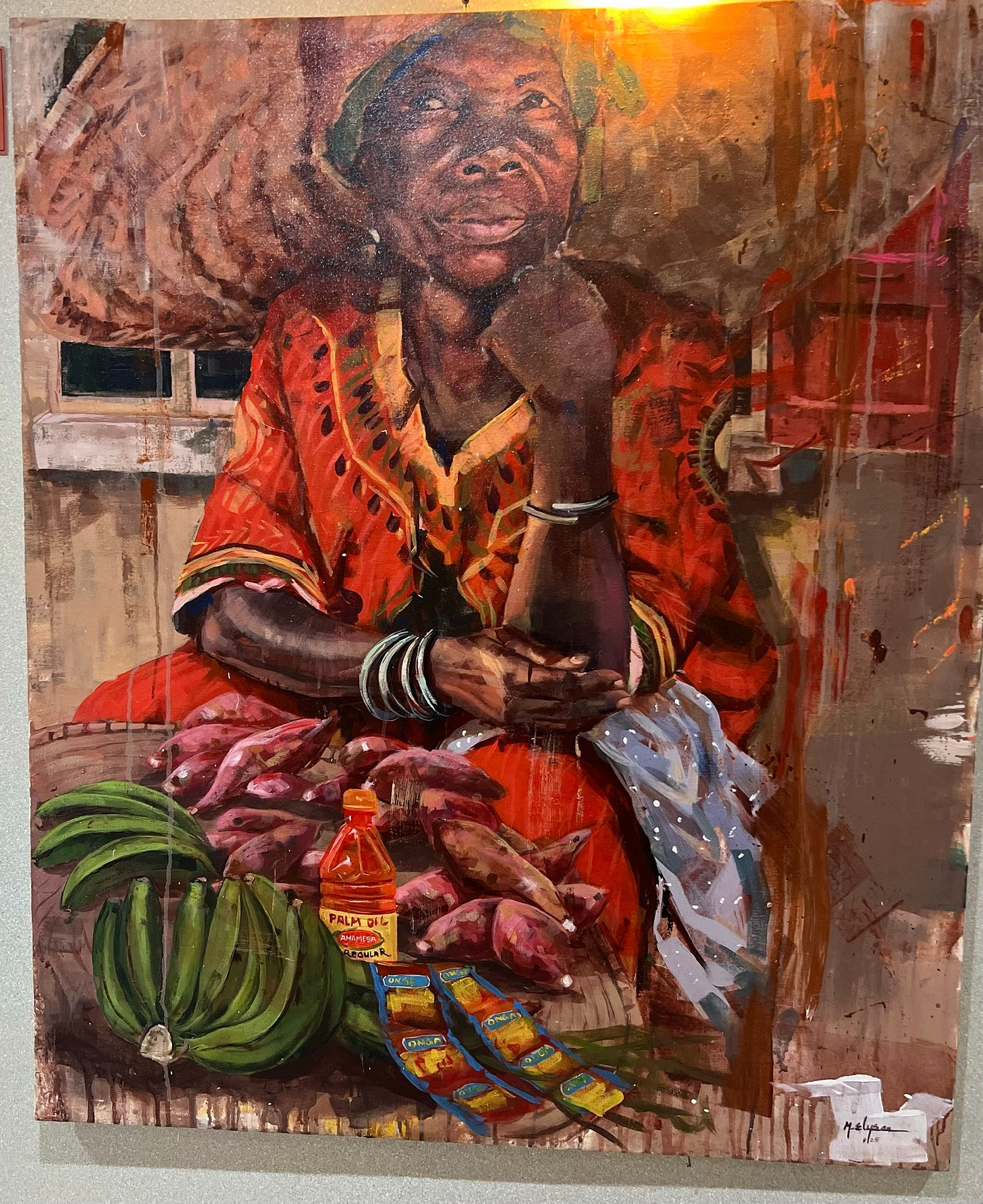The Vendor and Other Doorways
It both grounds you in a specific place and dissolves you into a wider, weathered world.
“Art enables us to find ourselves and lose ourselves at the same time.” — Thomas Merton

I am in Rwanda for the first time. When asked about my first impression, I find myself returning to it again and again: the air — soft and fragrant, felt on the skin and entering nostrils as soon as I leave a plane. The following evening, after an exhibition, my senses widen even further with an added orchestra; the chirping of Imbabura crickets blends with the low, steady croak of Ishishiranyafrogs, while the gentle rustle of Inzoka y’ikirere moths stirs the shadows. It is a chorus without a conductor, a breath held and released between earth and sky. Were it not for the hum of cars and the restless drone of motos, this moment could unfold like a living painting.
At The Threads of Life exhibition, I visit before I am enchanted with this Friday evening scene, the room is full of Elysee’s paintings, each one astonishing — colours that keep breathing after your eyes have moved on, textures that hold their own small weather systems. There is no weak note here, no afterthought: every canvas is a world complete.
And yet, one gaze pulls me closer. One of the Vendor.
A woman in a wide-brimmed hat sits with her hand cupped beneath her chin, a posture equal parts contemplation and vigilance. Beside her, bananas rest in their golden crescents — fruit, currency, moonlight caught in daylight. Her gaze is steady, fierce; an unyielding look of one who not only inhabits the moment but commands it, who holds time itself as both witness and sovereign.
The artist, soft-voiced but luminous, tells me many of these works — all these incredible, breathing worlds — were born from the memories and observations, painting from the threshold.
Thresholds. The place between in and out. Between here and there. The edge of the familiar, where one step more becomes the unknown. I have always believed thresholds have their own weather — a mingling of currents from both sides. To stand on a threshold is to see with two sets of eyes, to carry two airs in your lungs. Perhaps that is why his paintings feel so alive: they have been made in that double-breathed space, where the street and the interior, the fleeting and the fixed, coexist.
You don’t need to go far. Life comes to you if you watch long enough.
He speaks of catching a scene in the same breath it is lived — colours still warm from the light that struck them, air still carrying the smell of ripe bananas. Even when the paintings are brought indoors, they keep the street with them: its dust, its rhythms, its mood.
I look again at Vendor, and it is all there — the invisible street humming behind her, the same honks of the motos that would overtake a sound of nature and the air between her hand and her chin.
Later on that night, when I observe the view from one of the hills, after a magnificent concert, rain arrives suddenly, in one sweeping gesture — the same rain, perhaps, that once fell on her stall. And I think: this is what his work does — it carries the outside in, without losing the weather. One threshold, one gaze, one remembered street. Enough to make a wall breathe. Enough to make you believe that all paintings, when made with such attention, can become doorways.



